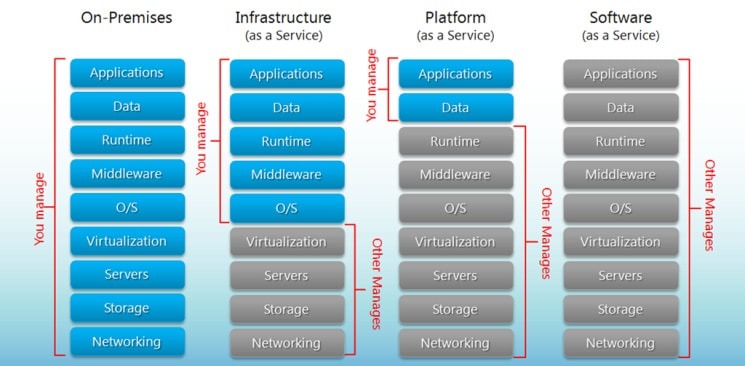
IaaS
Infrastructure as a service (IaaS) is a cloud computing offering in which a vendor provides users access to computing resources such as storage, networking, and servers. Organizations use their own platforms and applications within a service provider’s infrastructure.
Key features:
Instead of purchasing hardware outright, users pay for IaaS on demand.
Infrastructure is scalable depending on processing and storage needs.
Saves enterprises the costs of buying and maintaining their own hardware.
Because data is on the cloud, there can be no single point of failure.
Enables the virtualization of administrative tasks, freeing up time for other work.
PaaS
Platform as a service (PaaS) is a cloud computing offering that provides users with a cloud environment in which they can develop, manage, and deliver applications. In addition to storage and other computing resources, users are able to use a suite of prebuilt tools to develop, customize, and test their own applications.
Key features:
PaaS provides a platform with tools to test, develop, and host applications in the same environment.
Enables organizations to focus on development without having to worry about underlying infrastructure.
Providers manage security, operating systems, server software and backups.
Facilitates collaborative work even if teams work remotely.
SaaS
Software as a service (SaaS) is a cloud computing offering that provides users with access to a vendor’s cloud-based software. Users do not install applications on their local devices. Instead, the applications reside on a remote cloud network accessed through the web or an API. Through the application, users can store and analyze data and collaborate on projects.
Key features:
SaaS vendors provide users with software and applications via a subscription model.
Users do not have to manage, install or upgrade software; SaaS providers manage this.
Data is secure in the cloud; equipment failure does not result in loss of data.
Use of resources can be scaled depending on service needs.
Applications are accessible from almost any internet-connected device, from virtually anywhere in the world.


